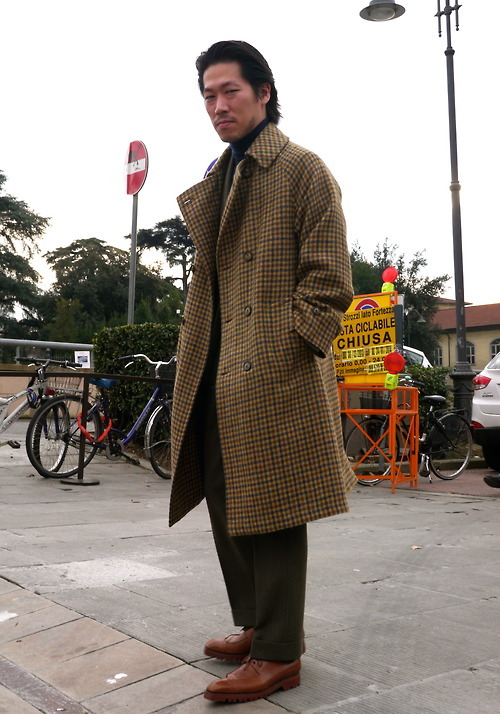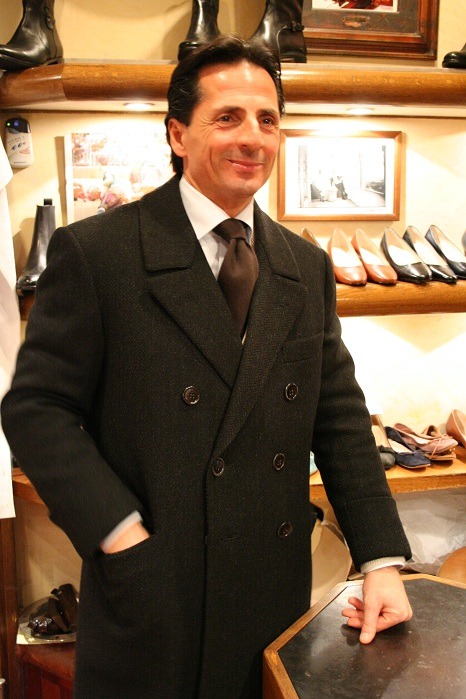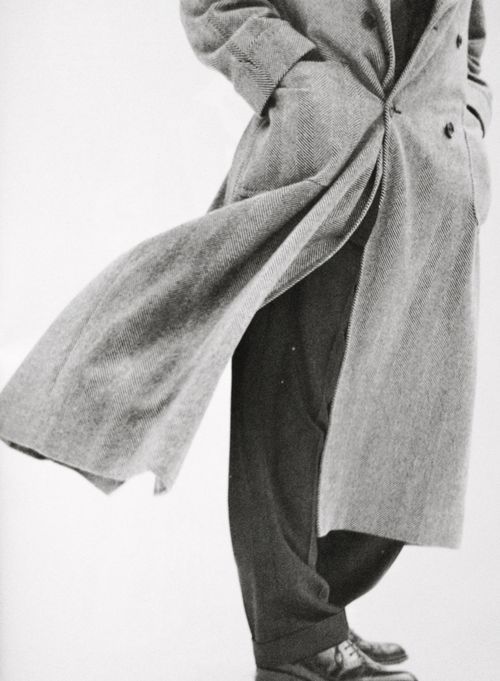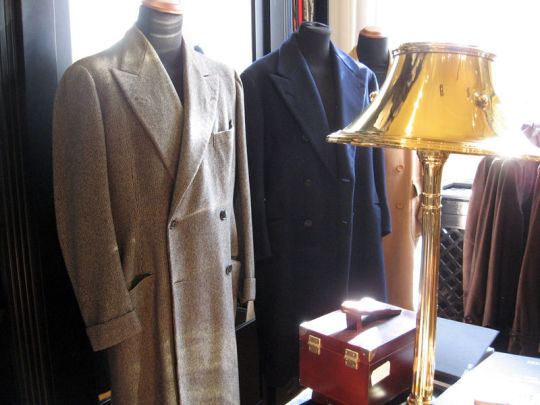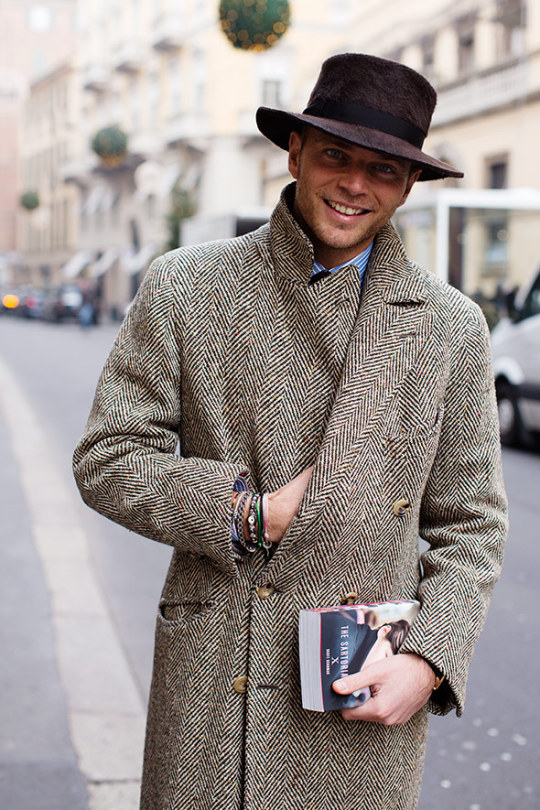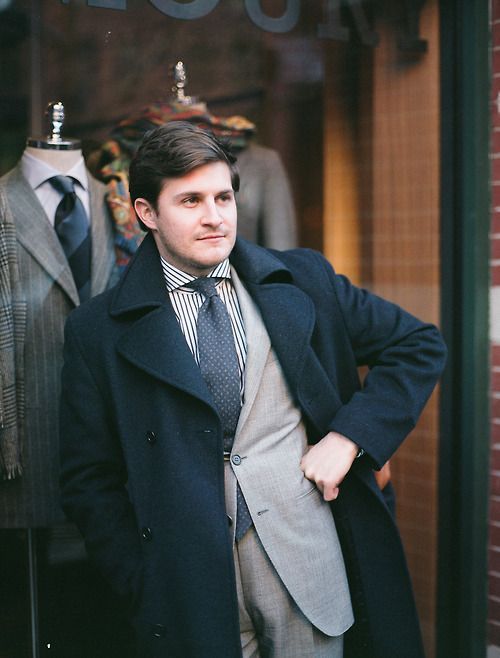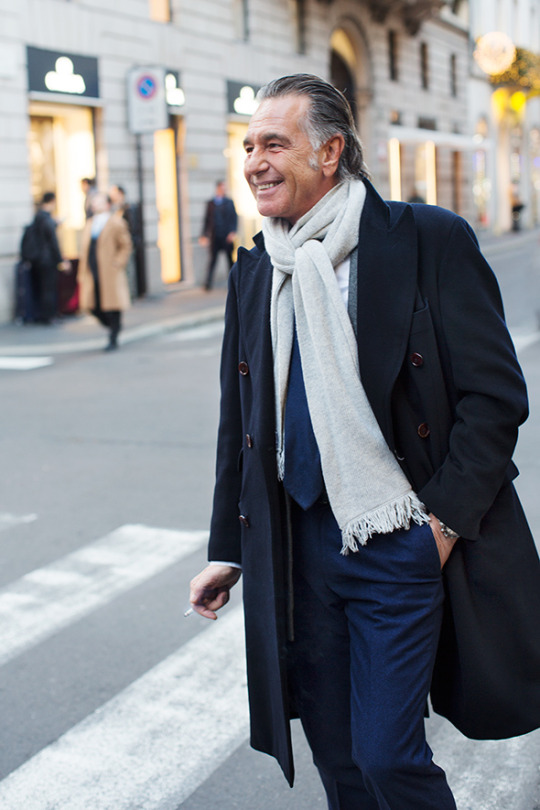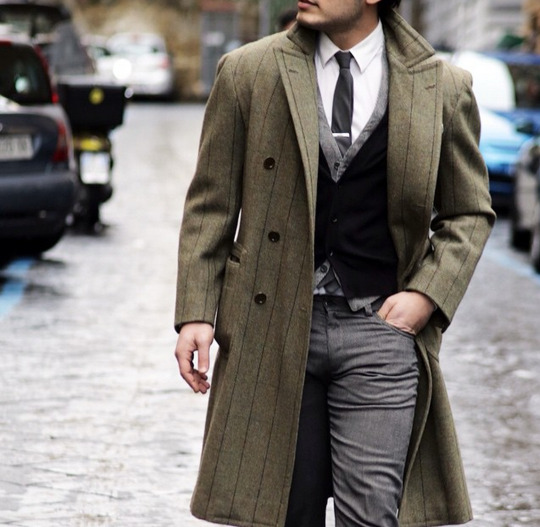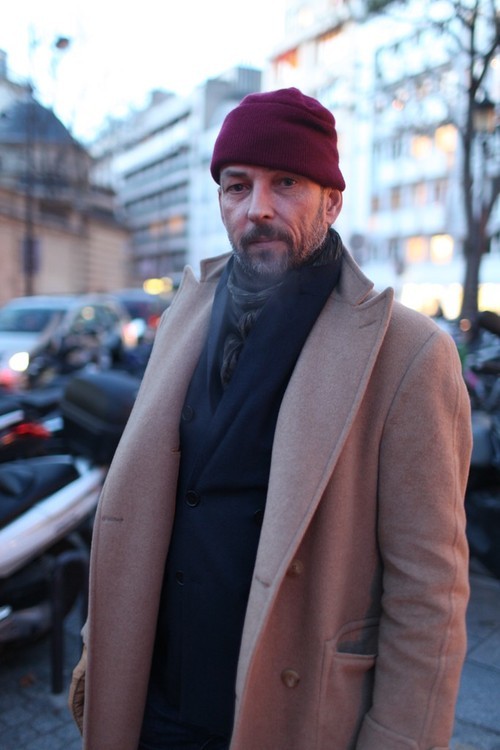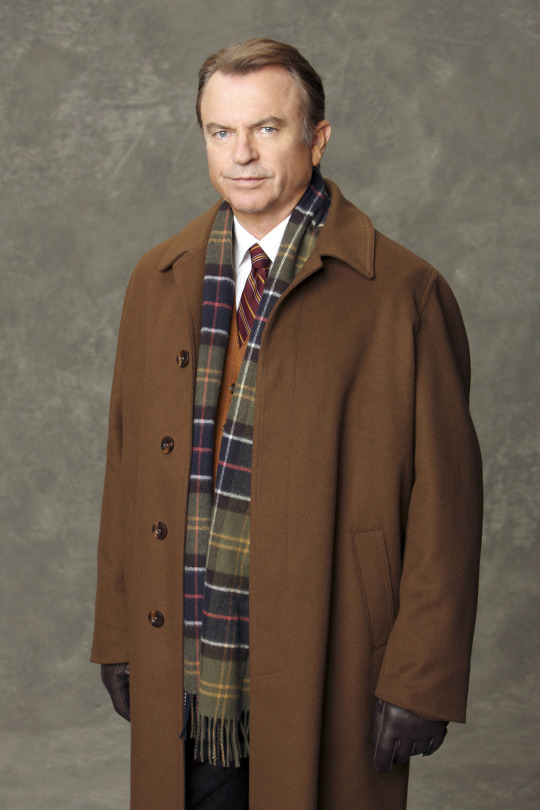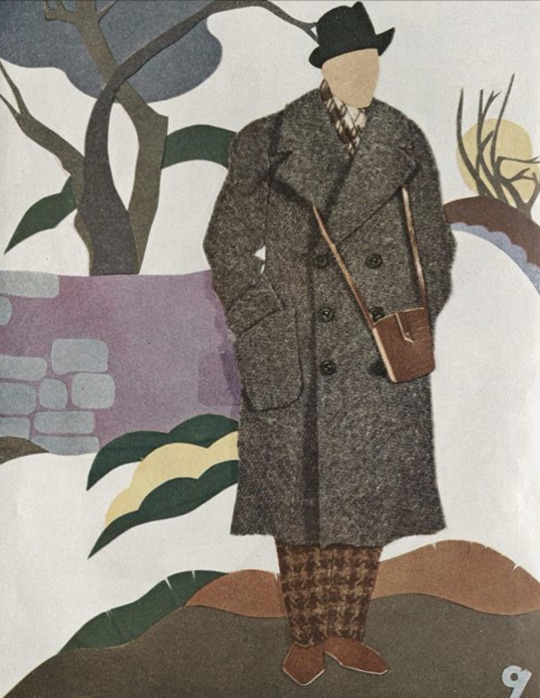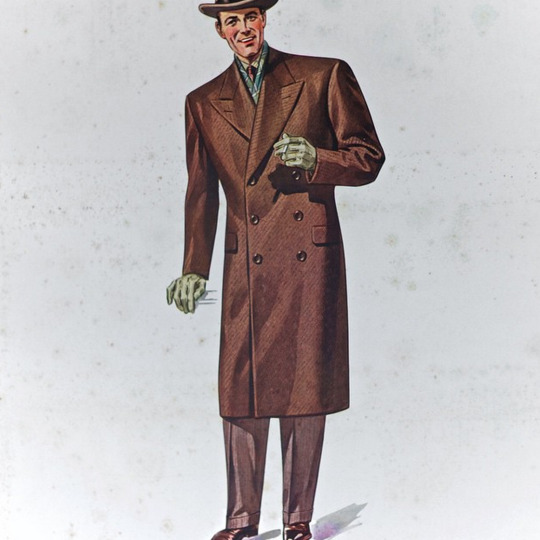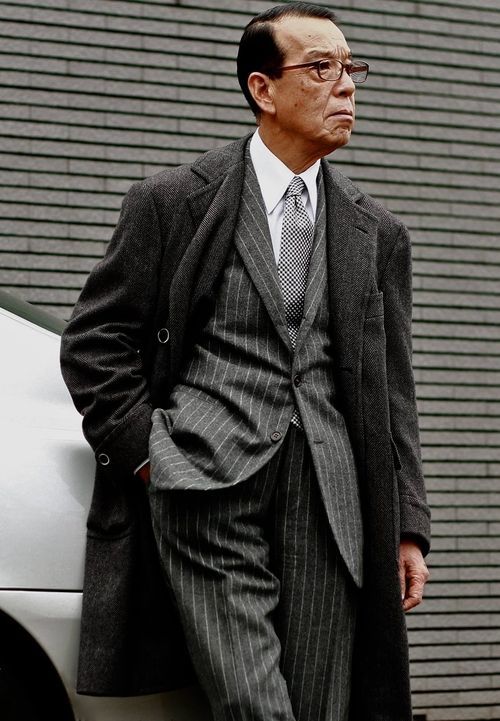
Despite that old line attributed to Mark Twain – “the coldest winter I ever spent was a summer in San Francisco” – it actually doesn’t get that cold here. In the dead of winter, temperatures can drop into the low 40s, but that’s basically springtime in Moscow, when street performers come out to Stary Arbat to busk for tourists.
Still, that doesn’t make me want dress coats any less. And by dress coats I mean the kind of topcoats and overcoats that have mostly disappeared from modern wardrobes. With fewer men wearing suits and sport coats nowadays, fewer still need the kind of outerwear that traditionally accompanied them. So, today, we have hundreds of casual outerwear styles, but only a handful of options for something dressier than a parka.
My own wardrobe has two dress coats, and despite the weather being less-than-frigid, I find them surprisingly useful. They’re too warm for the afternoon, but great for keeping out that biting chill in the morning and night – which are basically the only times I’m outside of work.
So, I’ve been thinking about commissioning a few more from Steed, and mulling over what kind of styles I’d like. I’ve come down to six (arguably three or four too many, but a list of two would be joyless). Here’s what I’d consider the ideal dress coat wardrobe. Maybe there will be something here you like as well.

THE FORMAL GUARD’S COAT
Truthfully, any dress coat can be worn with a suit nowadays. If snorkel parkas and waxed Barbours are used with business-wear, nobody will bat an eye at a tweed Ulster. Still, for my money, I think the best formal overcoat might be a Guard’s.
As its name suggests, the Guard’s coat is modeled after something worn by the Grenadier Guards (the former regiment of Edward VIII, and thus the most influential in terms of men’s style). Coat styles can be very fluid, but generally speaking, a classic Guard’s coat has a double-breasted closure, peak lapels, turnback cuffs, half belt, and an inverted pleat back. Supposedly, those large turnback cuffs were once used for keeping off-use gloves in place, but nowadays they’re just decorative.
Although the Guard’s coat is technically a military style, I find it perfect for dress wear. It’s more modern looking, to my eye, than the Chesterfield (the other business standard). The flapped pockets give it a streamlined appearance, while the inverted pleat back allows you to get a close fit without constricting movement (good for when you’re wearing this over a suit jacket). You can see Prince Charles above in a tan Guard’s coat, but I think the style does best in navy.
Unfortunately, of all the classic coat styles, the Guard’s is one of the hardest to find. Lanvin has something similar this season, even if it’s not technically a Guard’s. Your other option is to scour vintage shops or go bespoke. The good news is that, because of their sturdy construction, vintage coats are usually in pretty good condition (and can be had for pennies on the dollar). In fact, should you find anything on this list too expensive, I encourage you to stop by your local thrift (Jesse wrote a great thrifting guide at Put This On).
Options: Lanvin peak lapel double breasted.
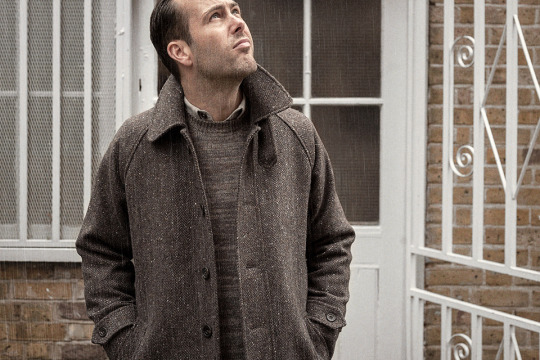
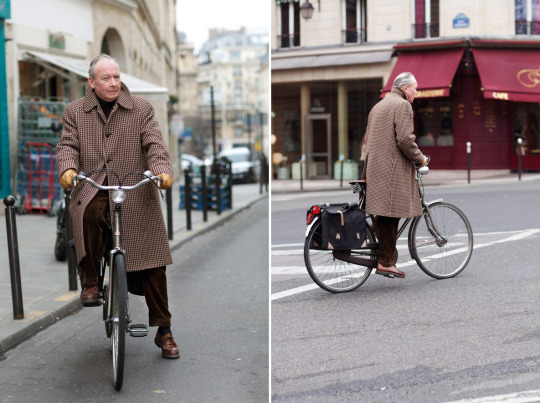
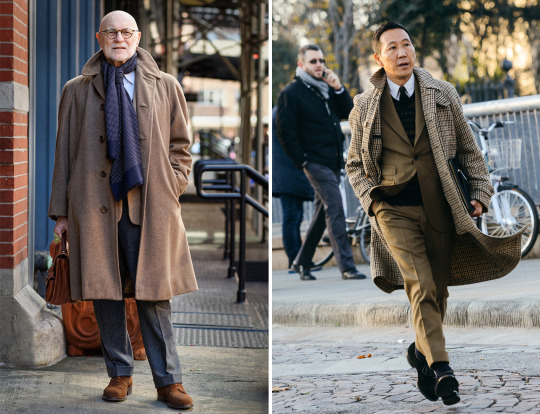
THE EASY FITTING BALMACAAN
If a Guard’s coat is what you wear with dark city suits, then a Balmacaan is for your tweed sport coats and Shetland sweaters. It too has military origins, although nowadays is mostly just a rustic style. Its name, in fact, is taken from a country estate near Inverness, Scotland.
The charm of a Balmacaan is all in the fit. Whereas most coats on this list are relatively trim, the Balmacaan is loose and roomy. The body was originally intended to fit over Prussian military uniforms, then bulky country clothes in Scotland. Assuming you’re neither a Prussian officer nor part of the Scottish gentry, I think the slightly oversized silhouette is nice for a comfortable, carefree look. See Bruce Boyer above in his Balmacaan and scarf, or Yasuto Kamoshita wearing his over an olive suit.
There’s also just the functional appeal. In a loosely woven, spongy tweed, a Balmacaan can be warm and cozy. In a denser wool gabardine, it’ll keep the rain off your back. The fly front protects you from wind; the Prussian collar can be buttoned at the neck; and the raglan sleeve construction, cut so that the shoulder seams run diagonally from the armpit to the neck, is said to keep water out better than set-in sleeves.
This would be the perfect coat for late fall or early winter, or maybe even the wet days of spring. Wear it with grey flannels and a tweed jacket, or even a chunky sweater and some cords. I like how one of the men above is wearing his with Tyrolean shoes.
Options: Valstar “Simon” in bonded tweed; oversized Camoshita in puppytooth at No Man Walks Alone and Mr. Porter; S.E.H. Kelly Donegal tweed (sold out at the moment, but might come back); and O’Connell’s house line in brown and grey tweed.
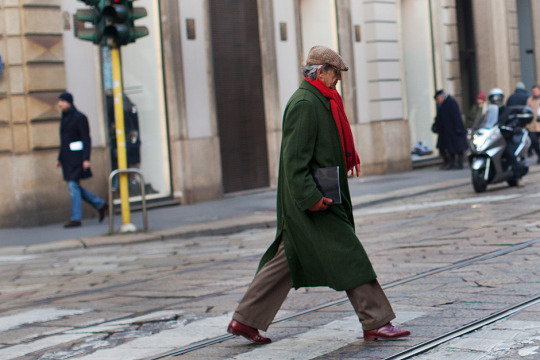
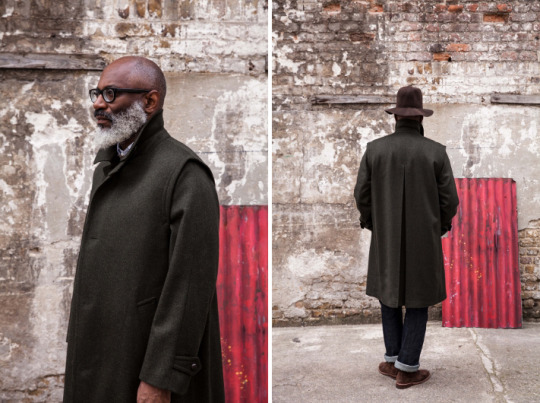
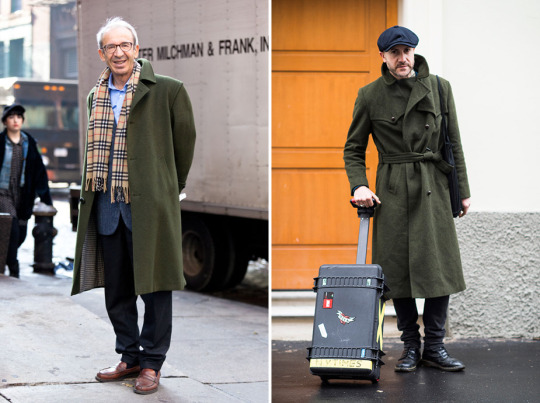
THE COUNTRY LODEN
The term Loden actually refers to two things – there’s the cloth, then the coat. As a cloth, it’s been said that Loden is to Austria what tweed is to the Scotland. Traditionally made from the coarse wool of mountain sheep, it’s roughly woven together before being felted through a wet finishing process. This shrinks the wool by a third, making it dense, but supple. The fabric is then repeatedly brushed and sheared until it achieves a desired nap. At the end, you have this marvelous fabric that’s hardy enough to keep out the rain, snow, and wind, while still maintaining a beautifully soft and almost hairy look.
Then we have the Loden coat, which of course is made from Loden cloth. Like the Balmacaan, the originals were meant to fit roomy – loose around the body and reaching just below the knees. The back was constructed with a deep center vent that swung out from the shoulder blades, and the fly front was said to help protect the leather buttons from exposed underbrush. Originals occasionally had a small cape around the shoulders, but that’s mostly disappeared from modern designs.
Lodens were originally worn by Austrian farmers, shepherds, and hunters in the mountainous area of Tyrol, but you’re as likely to find them there today as you are Tyrolean shoes. No, they’re mostly just used as a “rus in urbe” fashion item nowadays, having been picked up by cosmopolitans sometime in the 1980s. The New York Times once wrote of them: “the coats were really a kind of caste mark, roughly definable as European preppy, that seemed to go automatically with cuff buttons left open on a bespoke sport coat, or a promising job at the Morgan Guaranty branch on the Place Vendrome.”
A Loden coat might seem redundant if you already have a Balmacaan, and it sort of is, but that deep, rich, olive green is such a wonderful color. It goes well with tan, cream, grey, blue, brown, and burgundy – basically anything you might have in your wardrobe. It’s striking and unusual, but not so unusual as to seem dandy. Just be careful: designers sometimes use the term Loden to refer to a deep green color, even if the fabric itself is not genuine Loden cloth.
Options: Salko of Austria’s “Hubertus”; Lodental’s remixed Loden; Cordings, Landau, and San Francisco Clothing Company’s traditional Lodens; and a nice classic-contemporary design from Drake’s of London.
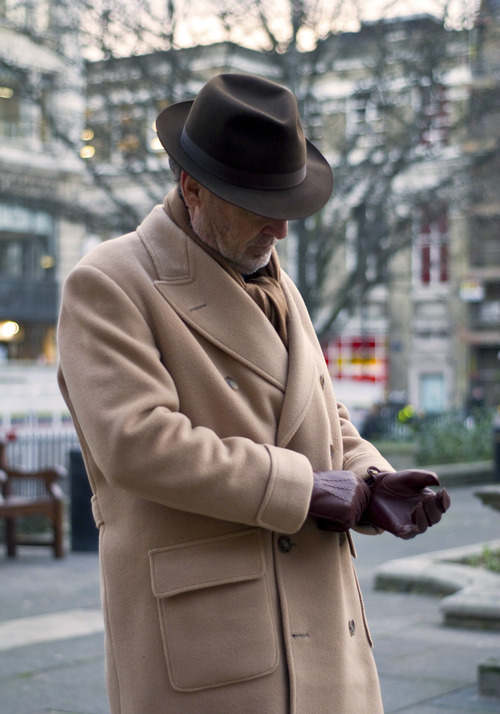

THE ALL-AMERICAN POLO COAT
If I could only have one overcoat, it’d be a polo. It looks just as good worn open as it does closed, and while it’s dressy enough to be thrown over a suit, it’s informal enough to pair with casualwear. It also has that classic American charm, even if the design came from abroad. As the story goes, the polo coat derives from the wait coat – a wrap style that you can see in the last two photos above. Wait coats were traditionally worn by British polo players in between period matches (known as chukkers). And when the game came to the US in the early 20th-century, so did the coats.
At some point, they were picked up by Princeton and Yale university students, and someone had the ingenious idea of replacing the belt with buttons. The style eventually made it onto Brooks Brothers’ racks, then spread westward with the growing popularity of Ivy Style. Today, they’re probably the most quintessentially American of all overcoat styles – typically made with a 6×3 double-breasted closure, envelope pockets, cuffed sleeves, and a Martingale back (a loose, half-belt design that hangs form the waist). Supposedly, Yves Saint Laurent used to walk his dog in the morning while wearing a grey, three-button suit with a sober shirt and equally sober tie. For a coat, he’d either use a polo or duffle.
I’m thinking about getting a polo coat for my first overcoat commission from Steed. The question is just about details. A peak lapel, like the Duke of Windsor used to wear, or a more conservative reversible collar to match the casual packet pockets? Should there be an out-breast pocket or none at all? Or maybe a flapped out-breast like Ralph Lauren’s above? What fabric would be best?
I’m still up in the air on those questions, but if all goes well, the order should go in next year. Been waiting forever for this commission, so I’m excited.
Options: Brooks Brothers Golden Fleece; Polo Ralph Lauren; Ben Silver; O’Connell’s; Luigi Bianchi Mantova; and Mr. Porter’s Kingsman house line. Notable mentions: some very cool wrap coats from Eidos and Camoshita, which look similar to the original polos. See an old version of the Camoshita being worn here.
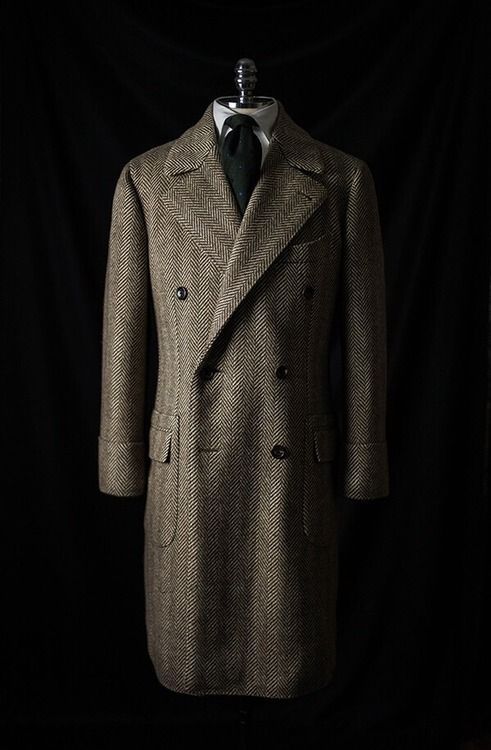
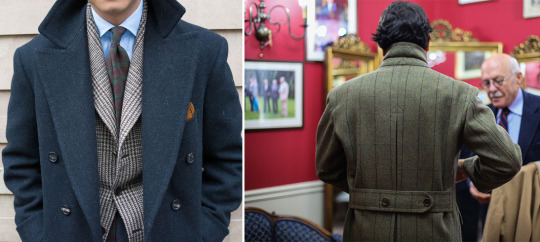
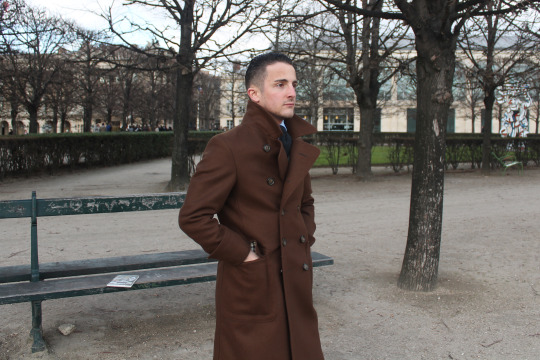
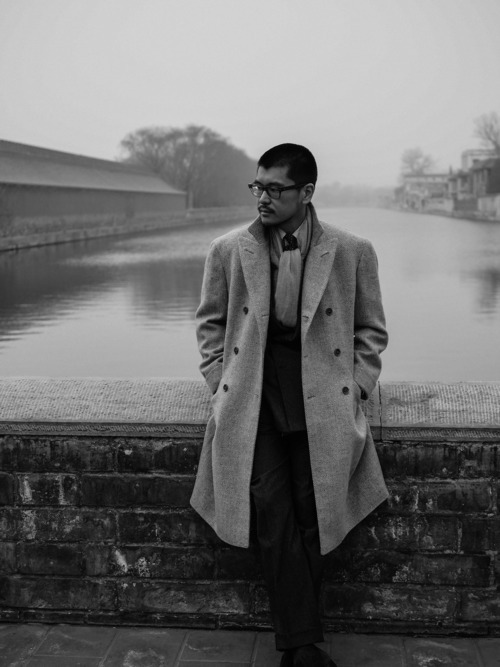
THE RUGGED ULSTER
I have a weird rule when it comes to coats: I think single-breasted ones should always be worn open. Otherwise, they make you look like you’re wrapped in a bolt of cloth. In a pinch, you can get away with a fastened single-breasted if it has a low-set chest, so that the “v-line” is deeper, giving you a bit more room to show off a tied scarf. If you know you’re going to button your coat that day, however, I think you’re almost always better in a double-breasted.
So, while I already have two country coats listed above – the Balmacaan and Loden – I think an Ulster could be useful for especially cold days. The Irish design isn’t too dissimilar from a polo, except that it’s made from tweed and features that signature Ulster collar. If the weather gets blustery, you can turn that collar up for protection.
Back when I met Neapolitan tailor Antonio Panico a few years ago, he was wearing a navy suit, light blue shirt, burgundy tie, and pair of black suede chukkas (a curious choice that looked great). And when we went out for dinner, he threw on this loose fitting, navy tweed Ulster coat – collar worn up for style, which I thought looked positively bad ass. Ulster coats strike me as the perfect way to add some drama to an outfit, while still keeping a slightly casual edge.
Options: Navy Eidos in a textured Moessmer wool; Rubinacci x The Rake in Casentino; and Prada in a grey boucle.

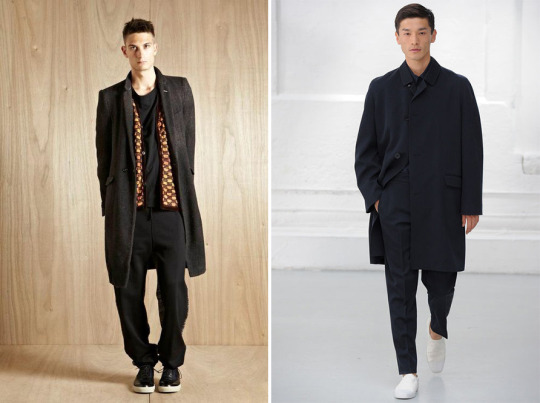

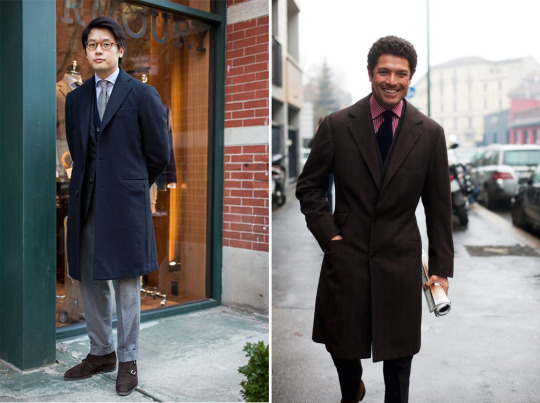
THE VERSATILE TOPCOAT
Finally, I imagine the perfect coat wardrobe to have some extra topcoats. As the rule of thumb goes, topcoats are generally lighter in weight than overcoats – the first being made from a 17oz cloth, the second 22oz and above. Whereas overcoats are generally knee-length or longer, a topcoat can be just above the knees. They’re better for cool days, although you can always layer if you need.
Like the Lodens and Balmacaans above, a single breasted topcoat here could be worn with either tailoring or casualwear. The only difference is that, in a simpler fabric – such as a plain tan, navy, or brown overcoating that’s neither tweed nor Loden – this would be easier to wear. Throw it over a sport coat, or use it to dress up a pair of jeans and a chunky sweater. A topcoat with denim is probably the easiest way to wear tailoring nowadays without looking overdressed.
The good news is that topcoats are everywhere. Contemporary styles are often thigh-length, although you’ll mostly want to keep these to casualwear (see brands such as Massimo Alba, Eidos, and Tomorrowland, or more affordably J. Crew and Club Monaco). If you’re getting something for strict casual use, however, I think designers that play with proportions are sometimes a little more interesting. See Lemaire, who combines the austerity of Helmut Lang with the relaxed, drape-y tailoring of Armani. Or Document, a South Korean label I’ve been really into lately. The two brothers at Les Freres Joachim wear these kinds of coats well with cropped pants and sneakers.
Otherwise, a classically designed topcoat can be more versatile, depending on what you have in your wardrobe. Just make sure the coat is big enough to fit over a tailored jacket. If you’re going bespoke, you can also ask your tailor for a scarf pocket – a deep interior pocket near the hip, which will allow you to store a folded-up scarf. That way, you won’t have to wonder where to put your accessory when you’re in restaurants or bars.
Options: Camoshita in blue herringbone; Ring Jacket selection at The Armoury; O’Connell’s pure cashmere topcoat; Brooks Brothers’ Brookstorm and Golden Fleece; Our Legacy coats in cilium wool; and Mackintosh in solid tan wool and marled glen check.
